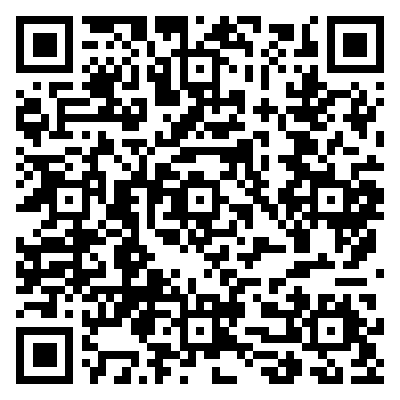Maintenance of bearings
Release time:
2023-09-28
The dismantling of bearings is a regular maintenance process, which is carried out during bearing replacement. After disassembly, if it is necessary to continue using or check the condition of the bearings, the disassembly should also be carried out with the same care as during installation. Pay attention not to damage the various parts of the bearing, especially the disassembly of interference fit bearings, which is difficult to operate.
The dismantling of bearings is a regular maintenance process, which is carried out during bearing replacement. After disassembly, if it is necessary to continue using or check the condition of the bearings, the disassembly should also be carried out with the same care as during installation. Pay attention not to damage the various parts of the bearing, especially the disassembly of interference fit bearings, which is difficult to operate.
Designing and making disassembly tools as needed is also crucial. During disassembly, study the disassembly method, sequence, and investigate the matching conditions of bearings based on the drawings to obtain a foolproof disassembly operation.
For the disassembly of the outer ring with interference fit, set several screws on the circumference of the outer ring to compress the screw. Tighten the screw evenly on one side and disassemble it on the other side. These screw holes are usually covered with blind plugs, tapered roller bearings, and other separated bearings. Several cuts are made on the shoulder of the housing cover, and pads are used to disassemble them using a press or lightly tapping.
The disassembly of the inner ring can be easily done using a press. At this point, it is important to ensure that the inner ring bears its pulling force. Furthermore, the pull-out fixtures shown are mostly used, and regardless of the type of fixture, it must be firmly clamped on the side of the inner ring. For this reason, it is necessary to consider the size of the shaft shoulder or study the machining of grooves at the shoulder for the use of drawing fixtures.
The inner ring of large bearings is disassembled using the oil pressure method. Apply oil pressure by setting it in the oil hole of the bearing to make it easy to pull. For bearings with large widths, the oil pressure method is used in conjunction with the drawing fixture for disassembly operations.
The inner ring of cylindrical roller bearings can be disassembled using induction heating method. The method of heating the local area in a short period of time to expand the inner ring and then pulling it out. In situations where a large number of such bearing inner rings need to be installed, induction heating method is also used.
clean
When disassembling the bearing for inspection, first use photography and other methods to make appearance records. In addition, it is necessary to confirm the amount of remaining lubricant and sample the lubricant before cleaning the bearings.
a. The cleaning of bearings can be divided into rough cleaning and fine cleaning, and a metal mesh frame can be placed at the bottom of the container used.
b. During rough cleaning, use a brush or other tool to remove lubricating grease or adhesive in the oil. If the bearing is rotated in oil at this time, be careful not to damage the rolling surface due to foreign objects and other factors.
c. During fine cleaning, slowly rotate the bearing in oil and carefully perform it.
The commonly used cleaning agents are neutral non aqueous diesel or kerosene, and sometimes warm alkaline solution is also used as needed. Regardless of the type of cleaning agent used, it is important to filter regularly to maintain cleanliness.
After cleaning, immediately apply anti rust oil or grease to the bearings.
LATEST NEWS
Excavator bearings play a crucial role in the production and maintenance of excavators. As a critical component, these bearings are responsible for supporting the load and enabling smooth rotation of various moving parts in the excavator, such as the boom, arm, and bucket.
2024-01-29
Disassembly method of needle bearing
The knocking force is generally applied to the inner ring of the bearing, and the knocking force of the shielding machine room should not be applied to the rolling element and cage of the bearing. This method is simple and easy to operate, but it can easily damage the bearing. When the bearing is located at the end of the shaft, use a copper rod or other soft metal material smaller than the inner diameter of the bearing to support the shaft end, and add a cushion block to the lower part of the bearing. Gently tap with a hammer to remove it. When applying this method, attention should be paid to the appropriate position of the cushion blocks and the correct point of application.
2023-09-28
Application of tapered roller bearings
Tapered roller bearings have tapered inner and outer raceways, with tapered rollers arranged between them. The projection lines of all conical surfaces converge at the same point on the bearing axis. This design makes tapered roller bearings particularly suitable for bearing composite (radial and axial) loads. The axial load capacity of bearings is mostly determined by the contact angle α Determined; α The larger the angle, the higher the axial load capacity. The angle size is represented by the calculation coefficient e; The larger the e-value, the greater the contact angle, and the greater the applicability of the bearing to withstand axial loads.
2023-09-28
The dismantling of bearings is a regular maintenance process, which is carried out during bearing replacement. After disassembly, if it is necessary to continue using or check the condition of the bearings, the disassembly should also be carried out with the same care as during installation. Pay attention not to damage the various parts of the bearing, especially the disassembly of interference fit bearings, which is difficult to operate.
2023-09-28
Method for Adjusting the Radial Clearance of Cylindrical Roller Bearings
For multi oil wedge tilting bearing pads, it is not allowed to repair or scrape the pads. When the clearance is not suitable, the pads should be replaced. For pads with adjustable thickness, the amount of pads can be adjusted by adding a stainless steel pad under the adjustment block at the back of the pad, or by thinning the thickness of the adjustment block. Note that for multi oil wedge tilting bearing pads, the thickness error between the same set of pads should be less than 0.01mm.
2023-09-28



